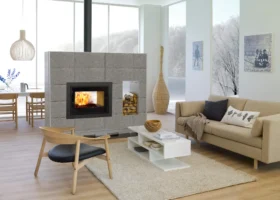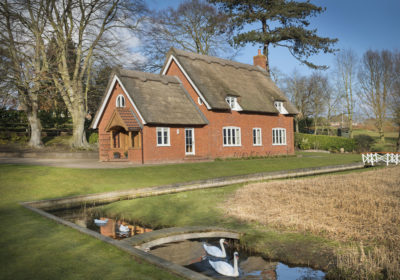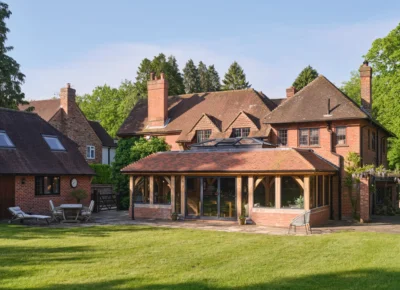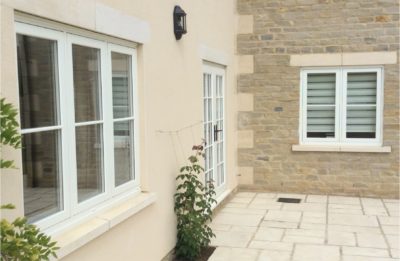Designing a House on a Budget: How to Get More for Your Money
1. Corner glazing
There’s no doubt that floor-to-ceiling cornerless windows make for a spectacular feature, opening up multi-aspect vistas and giving a sharp edge to a home’s aesthetic. The glossy mags are packed with high-spec homes sporting this kind of glazing.
Architectural purists will want to invest in specially-made, frameless structural glass that’s glued together to maximise light and views; this stuff looks amazing but costs £1,000s per m2. And that’s before you factor in elements such as steel joists overhead to carry the building loads. You can achieve a similar trick with sliding or bifold doors to connect house and garden.
Recreate it for less: A cost-effective alternative is to design this feature around standard-sized windows rather than bespoke products, and to include a structural post at the corner to minimise the engineering requirement. This can be clad to synergise with window frames or to match the internal and external wall finishes.
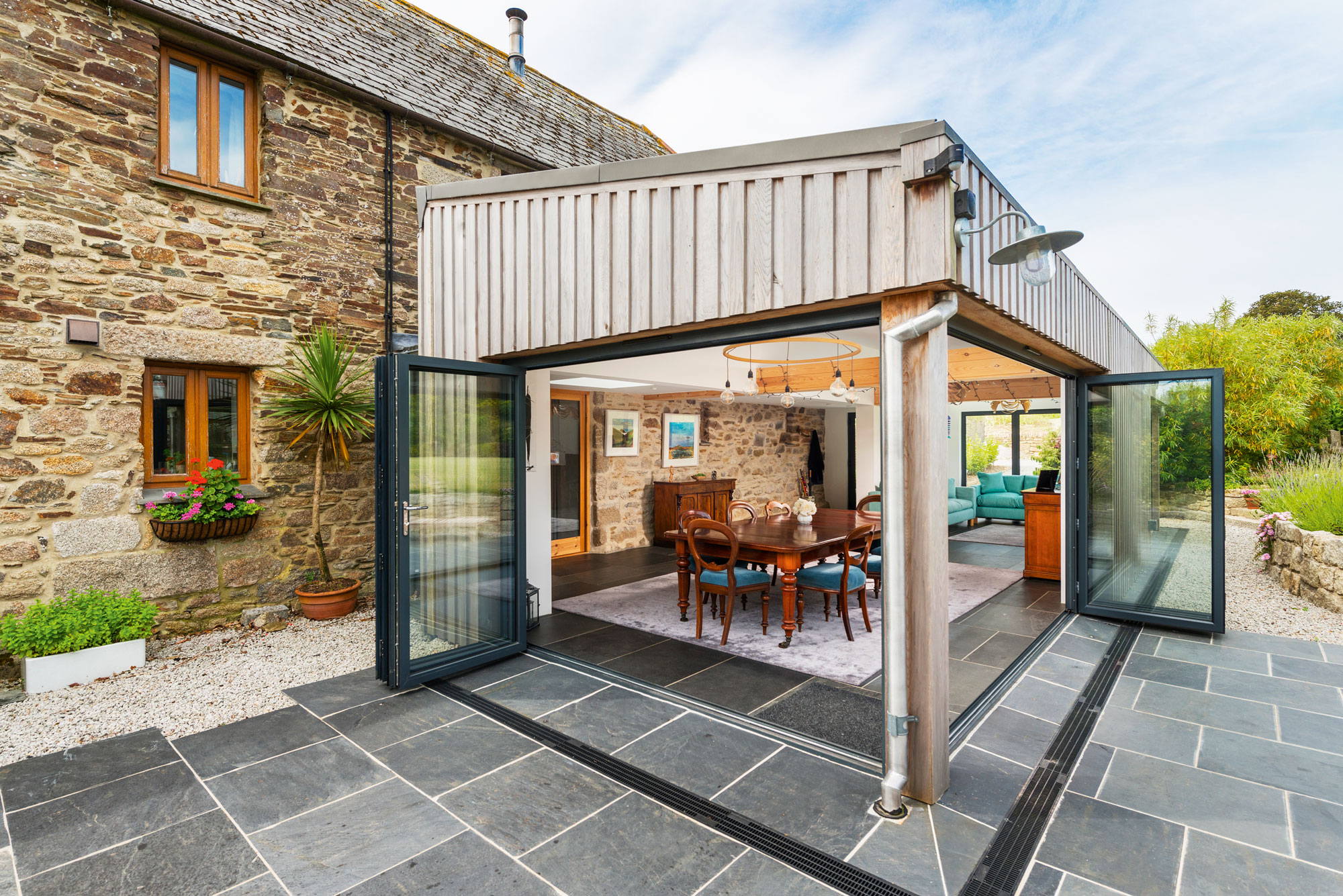
This steel portal frame extension features an opening corner, complete with bifold doors converging at a discreet post. It’s possible to do this without a post, but costs will shoot up in terms of creating a structurally stable opening
So you’ll get a similar dual-aspect effect, albeit with a small interruption in the outlook. Another neat trick with feature glazing is to hide the surround behind the wall reveals (where the unit meets the wall finish). This will evoke a frameless picture window look at a fraction of the cost.
2. Double-height spaces
You won’t see a lot of vaulted ceilings in boxy developer homes, largely because these features don’t meet the carefully calculated cost per m2 methodologies the big housebuilders rely on for their profits. But boy do they add a sense of drama and spaciousness, especially when used as part of a sensational atrium entrance into a home.
The price doesn’t actually need to be that different to creating two standard storeys, but you will lose out on the floorspace, so your total build cost per m2 of usable space will lean a bit more towards the expensive side. You’ll probably also want to kit an area like this out with high-spec glazing, fixtures and finishes, again adding to your overall budget. You might just find, however, that the extra wow delivers great value-for-money, not to mention a unique place to welcome and host guests.
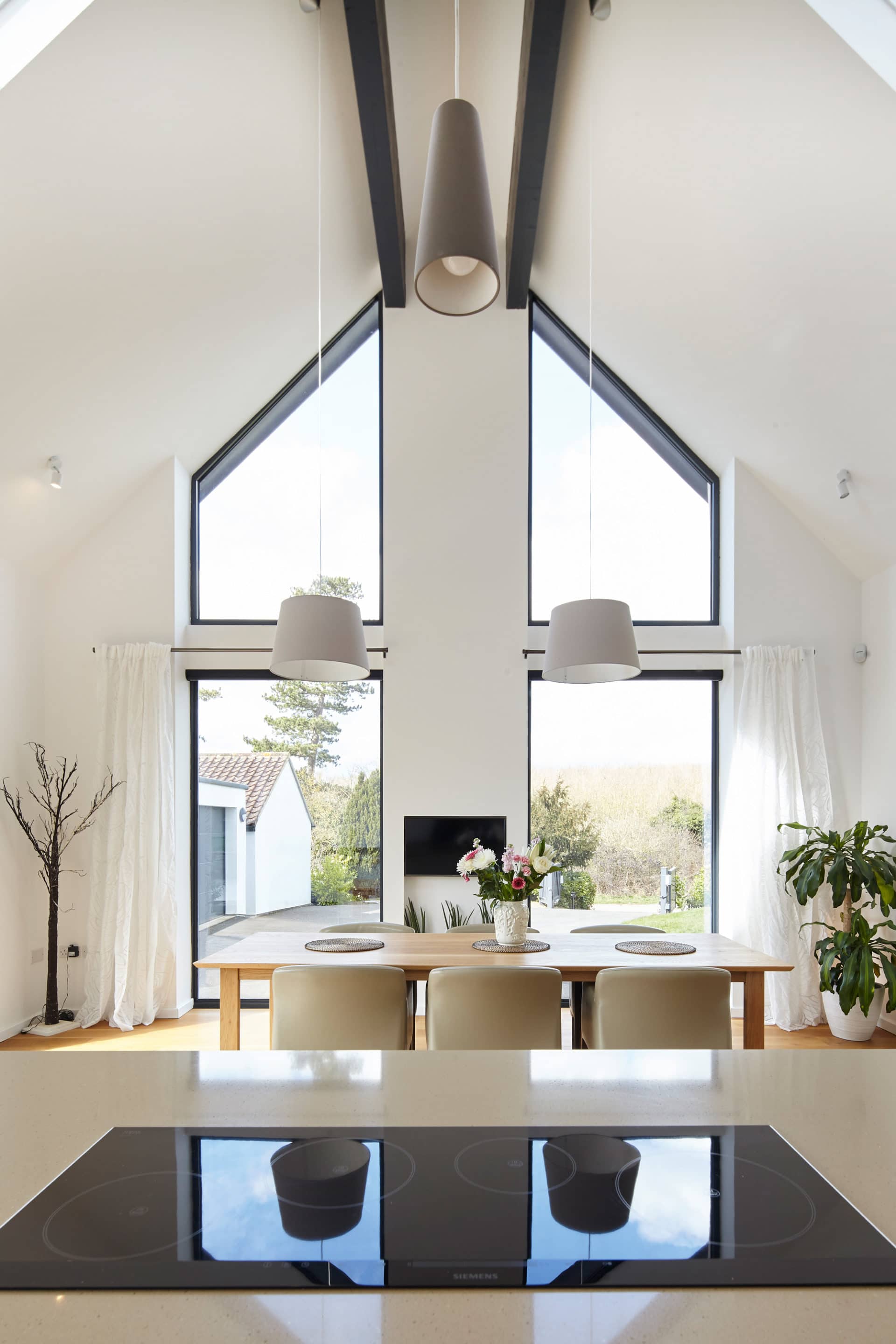
This project simplifies the glazed gable design while still capturing the amazing views, with standard walling framing four storey-height windows from Kloeber
Recreate it for less: If you can’t stretch to an atrium, or you simply can’t sacrifice the floor area, never fear – you can achieve a similar effect elsewhere. Vaulting the ceiling in top floor rooms, such as the master suite or above the stairwell, is a great way to create bright and airy accommodation without splashing out too much cash. Just bear in mind you will lose some attic storage space.
3 Exposed beamwork
Oak frame homes can be truly stunning, delivering natural beauty in spades, defining the architecture and enabling features such as dramatic vaulted ceilings. What’s more, their finished value tends to reflect their high quality. There are ways to streamline the design and save money. But ultimately, this is a specialist system based around premium materials. So what can you do if you love the aesthetic but your budget just won’t stretch?
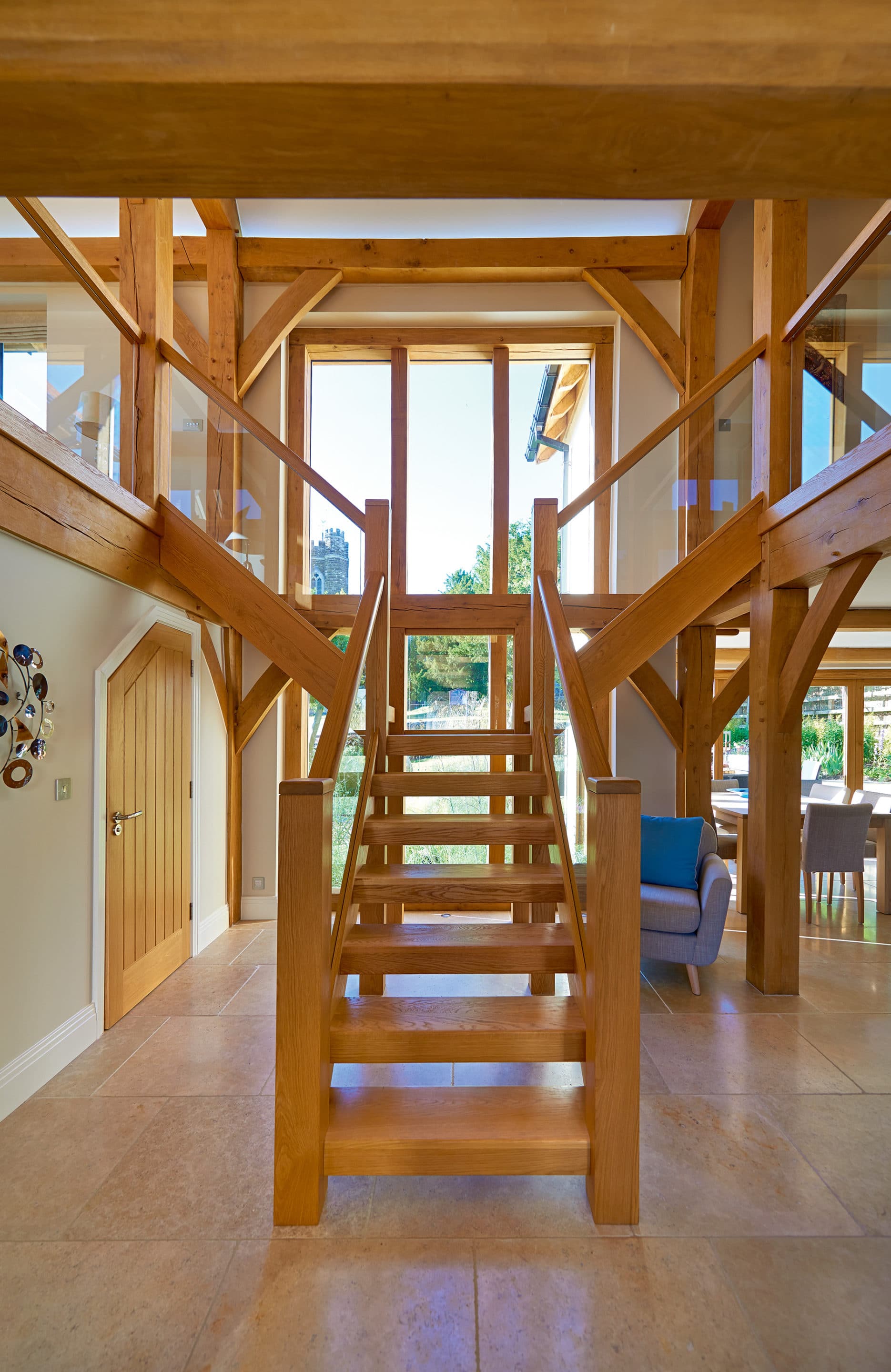
This entrance hall is packed with amazing features – double-height space, an exposed oak frame by Oakwrights
Recreate it for less: There are two main options to consider. One is to go with a hybrid build – perhaps using timber frame or blockwork for most of the build, and then switching to oak for the elements where you really want that character. That might be for the double-height entrance hall, for instance, or as roof trusses on the upper storey. The other is to use oak aesthetically, such as to create a fireplace feature, as stick-on ceiling beamwork and for one-off features such as porches.
4 Statement stairs
Splash out £30,000+ on a sculptural design and the best materials money can buy, and you could land yourself with an amazing flight that sets the tone for the rest of your home’s interior look. But you can still achieve the wow factor on a tighter budget. At Build It’s Self Build Education House we wanted to prove exactly that, so our main feature stair is built with solid ash rather than oak, saving us a tidy sum. But it’s still a £15,000 flight – partly due to the cantilevered design and structural glass balustrade. So what if you’ve got less than £10k to spend?
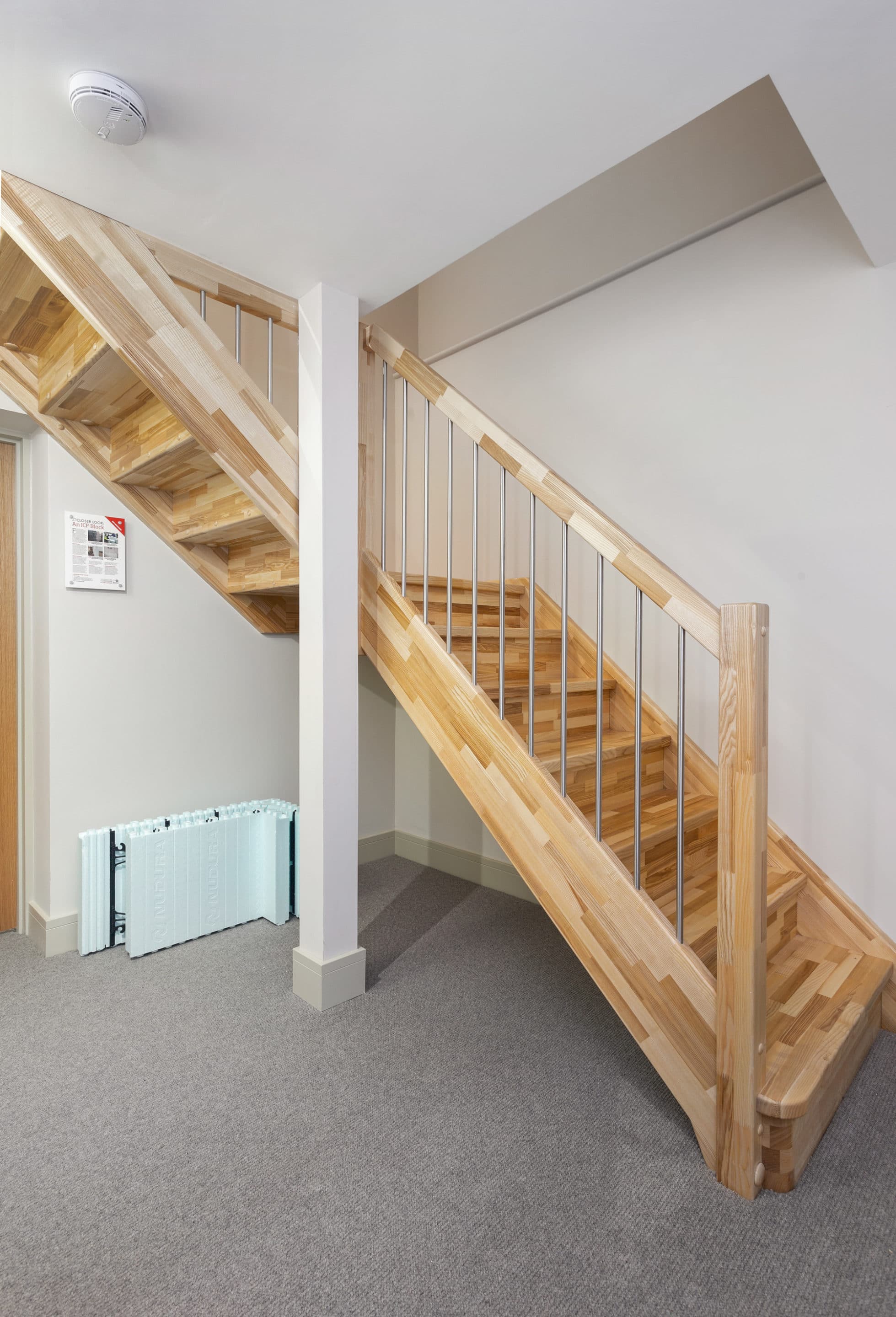
This finger-jointed ash basement design is inatlled at the Build It Education House
Recreate it for less: You need only head down to the Education House basement to see that it is possible to get a high-quality flight at a lower price point. This design uses finger-jointed ash for the treads and risers – cheaper than solid wood but giving a distinctive modern look – with timber handrails and steel spindles to preserve the flow of light. A similar flight might cost around £6,000 installed. Both our staircases are from Kloepping TSS. Take a look yourself via our interactive 3D tour.
5 Oversized doors
One design idea that’s made a splash in recent years is the oversized front door (typically at least 1.2m wide, and storey-height or bigger). Ideal for contemporary and barn-style homes, it can make for a unique focal point of the architectural design – hence this feature is often paired with top-notch surface materials and non-standard configurations, such as pivot hinges.
The bespoke nature of this door style means you can easily spend £5,000-£10,000; but the result will certainly make a lasting first impression on visitors. Of course, the hallway beyond needs to be large and open enough to accommodate it: hence this type of front door works best where you’re opting for high or vaulted ceilings.
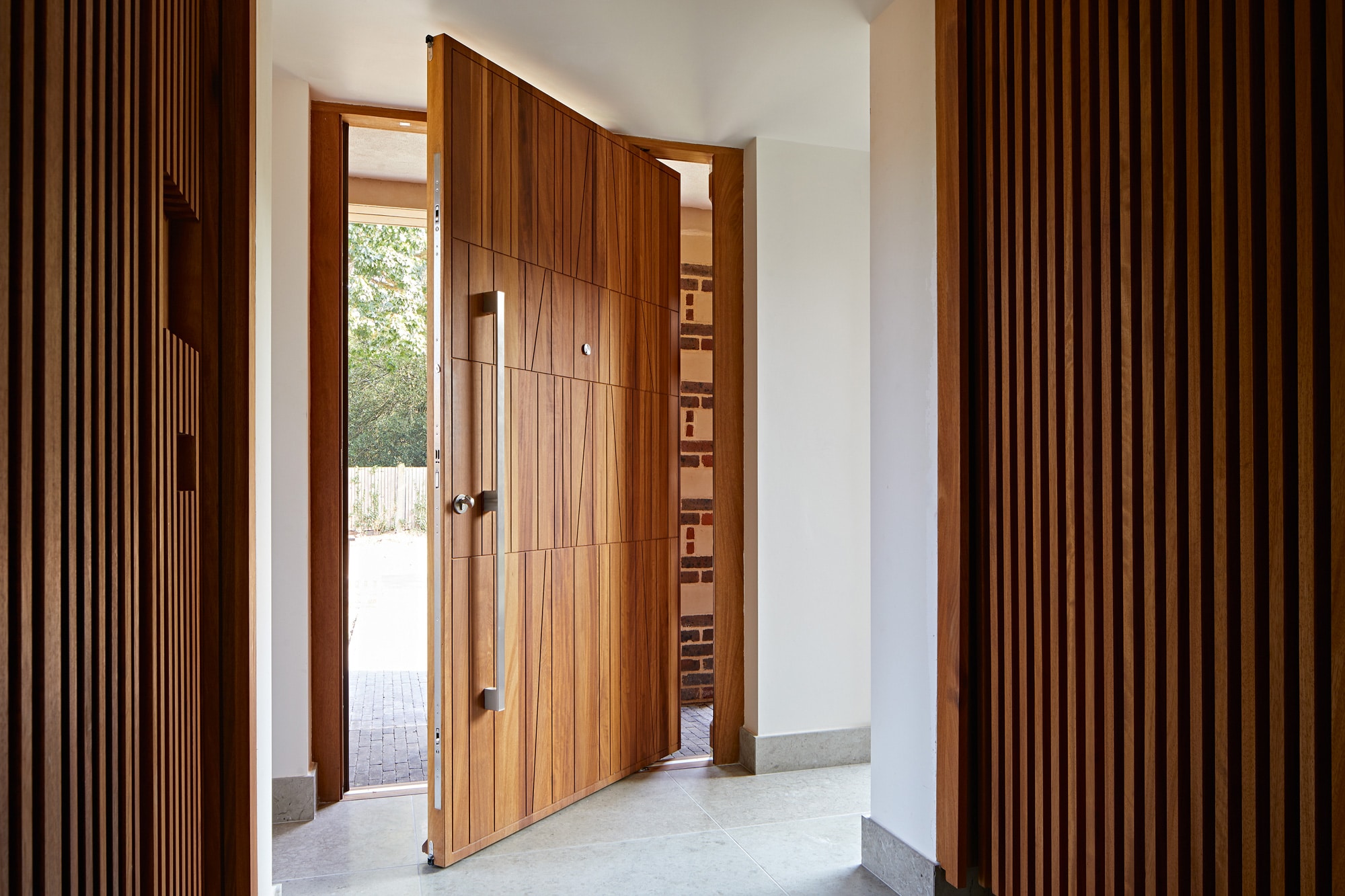
A statement-making pivot front door by Urban Front
Recreate it for less: You’ll never quite capture the full look of an oversized door any other way; but you can still achieve an impressive entrance on a smaller budget. Start by going for the largest stock-size unit you can – 2,040mm (H) x 926mm (W) designs are widely available, for instance. To get the look, team this with a top glass panel and/or sidelight windows to create the illusion of a larger entrance. Expect to pay at least £3,000 for a good quality installation in timber or aluminium.
6 Sun-drenched balconies
What could be better than sipping a glass of chilled wine from your new first floor balcony, overlooking garden views and the countryside beyond? The great news is, this kind of feature doesn’t have to be expensive. You will need to factor in the structure, decking, a glass balustrade, French doors and perhaps a decent roof overhang for shading/rain protection.
But as a rough guide, a small built-in balcony leading out from a master suite could add as little as £3,000 to your build budget (though you can of course spend much more). But it will bring a real sense of luxury, especially if there’s enough cover to enjoy the space beyond just the summer months.
Recreate it for less: Looking for a low-cost way to open your bedroom up to the outdoors? A Juliet balcony, basically a safety glass balustrade that can be fitted on or around French doors, could be the way forward. Juliet kits cost as little as £500 and shouldn’t take longer than an hour for your builder to install. What’s more, they can be more acceptable to the planners than full balconies.
7 Big skylights
Overhead glazing is a fantastic option to get high-quality natural light deep into a house. Specifying a vast, single piece of bespoke frameless structural glass will certainly transform a living space, not to mention framing sky views. There’s just one thing know: the bigger you go, the quicker the costs will shoot up – and they can easily top £10,000. Opting for a top-end motorised design that slides back to create an al fresco feel is a luxury option, worth its weight in gold for throwing lavish British-summer dinner parties, but could add £1,000s to the price.
Recreate it for less: Installing several smaller, standard size rooflights – painted to match the internal ceiling finish – will still allow wonderful amounts of sunshine to flood your new rooms. They’ll keep a lid on your spending, too, typically coming in at under £1,000 a pop installed.
8 Smart home tech
There’s a lot to love about an all-singing, all-dancing smart home. One that realises how far you are from the house and switches on the heating; that turns off all the lights and music, and sets the alarm, when you hit the ‘all off’ button; and that gives you access to high-definition audio visual in every room.
If you’ve got £50,000-£100,000 to spend, then you’ll be able to build on these life-enhancing elements and go all out for coveted features like a high-end home cinema and the best colour-changing lighting on the street. But it’s not all about flashing the cash: you can achieve a lot on a much smaller budget, too.
Get home tech for your project
Recreate it for less: We’re big fans of modern wiring at Build It. You don’t have to fit the bells and whistles straight away: get the infrastructure done during construction, and you can expand on it in the future. An entry-level smart home setup, with multi-room audio and centralised control of heating and lighting, could be achieved for as little as £20,000 in an average-sized house. Future-proofing for just a few thousand more than using conventional wiring!
9 Grand gables
Glazing the gables (the end walls beneath a pitched roof) can be a fantastic way to maximise the sense of light and volume in a self build home. There are all manner of ways to achieve this, but the sleekest – and priciest – is to use self-supporting structural glazing to fully connect house and garden, with not a hint of frame material detracting from the views. Some specialist companies can even integrate near-frameless glazed doors into the design. You’ll need to secure quotes specific to your project, but structural glazing typically costs in the region of £2,000-£3,000 per m2 (depending on size and specification).
Recreate it for less: Breaking up the design into a series of smaller, more standardised windows could instantly knock 50% or more off the cost compared to using frameless structural glazing. Slimline aluminium units will get you closest to the frameless effect, but engineered timber can look great, too. And rather than running glazing across the storeys, consider breaking
the gable up with an element of solid walling at first floor level. Either way, the trick will be to marry up the sightlines effectively across storeys. This aspect needs particular attention if you’re incorporating glazed doors.
10 Designer kitchens
Many a self build budget is blown when it comes to specifying the interior finishes; a few hundred here, a few thousand there and it quickly adds up. The kitchen is a common big-ticket culprit. That stylish design in the brochure starting at £25,000 will no doubt be the envy of friends and neighbours. But have you ever had that sinking feeling where the price tag starts to move out of reach, as you sit down with the salesperson to add in all the features you actually want? You’re not alone!
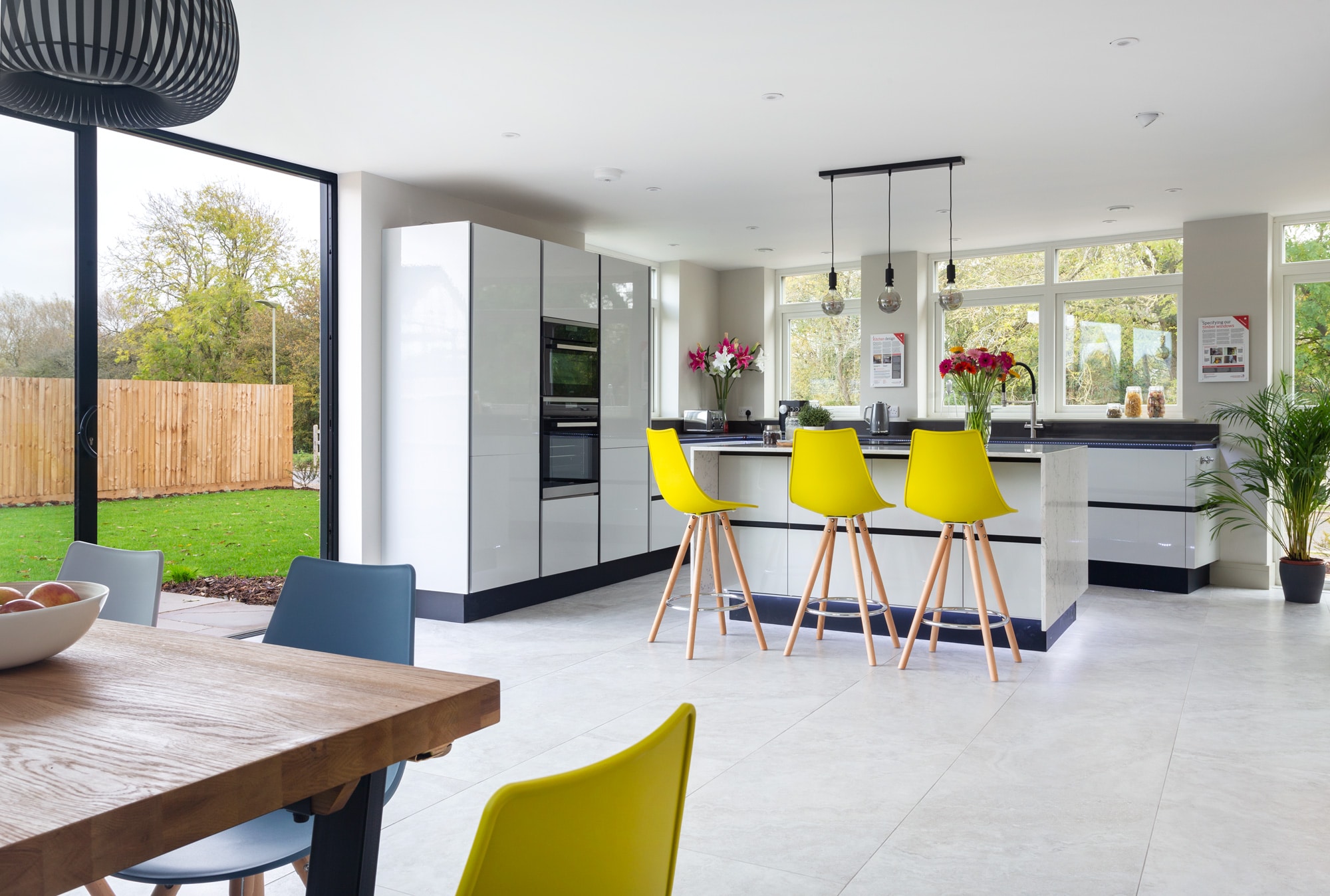
High-quality worktops and LED feature lighting complete the look in the clean-lined handleless kitchen
Recreate it for less: Try taking your cue from Build It’s Self Build Education House. We loved the idea of the kind of sleek, handle-less kitchen popularised by luxury European brands, but didn’t want to spend £35,000 on it. So we found a more affordable off-the-shelf design at Howdens that offered right balance of cost, quality and design.
We then upgraded it with luxury quartz and Silestone worktops, including a wow-factor waterfall countertop for the central island. Our finished kitchen came in at just under £15,000 (including appliances).
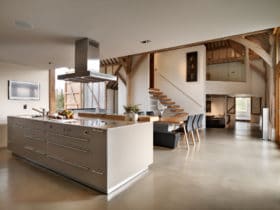
































































































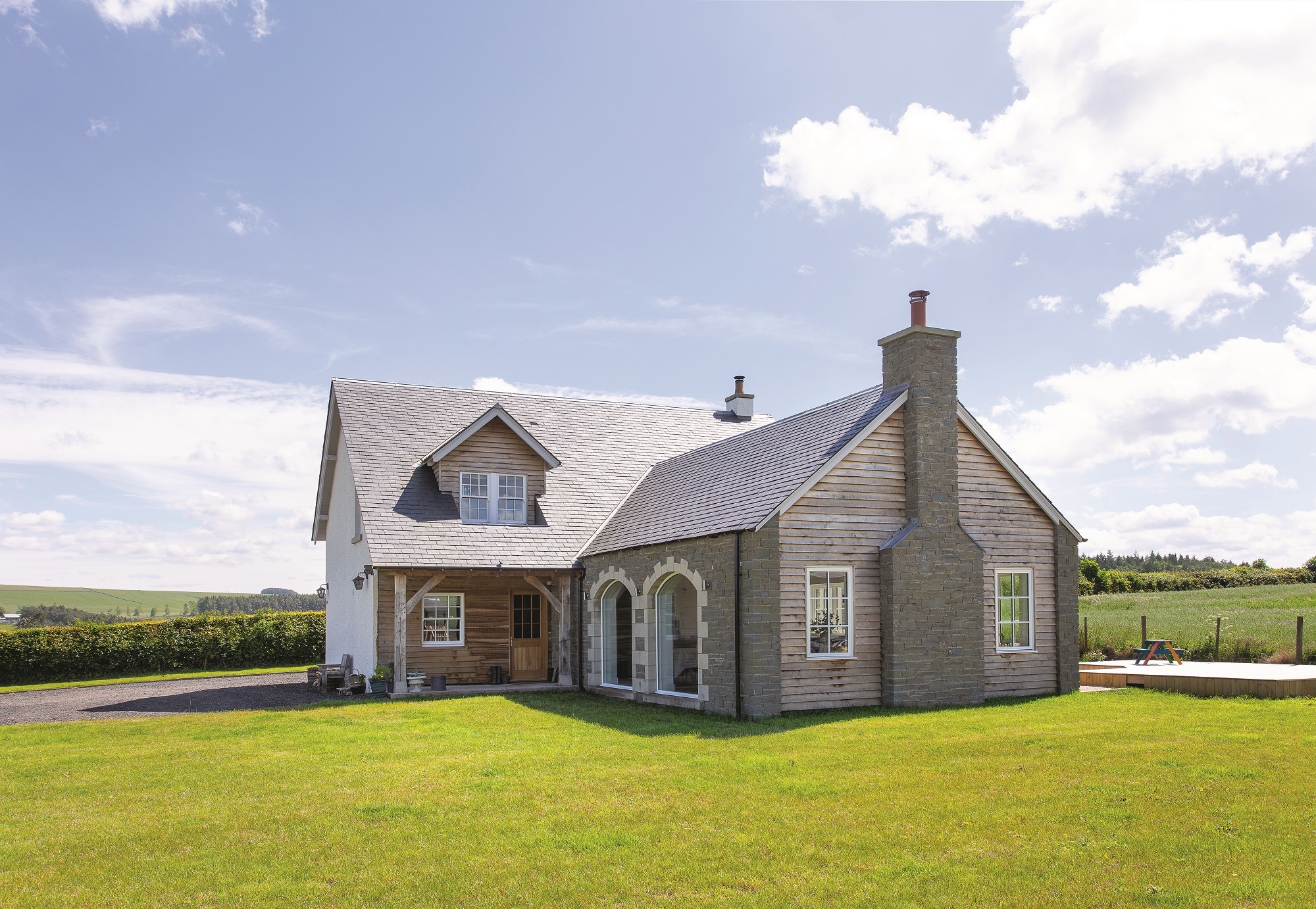
 Login/register to save Article for later
Login/register to save Article for later

